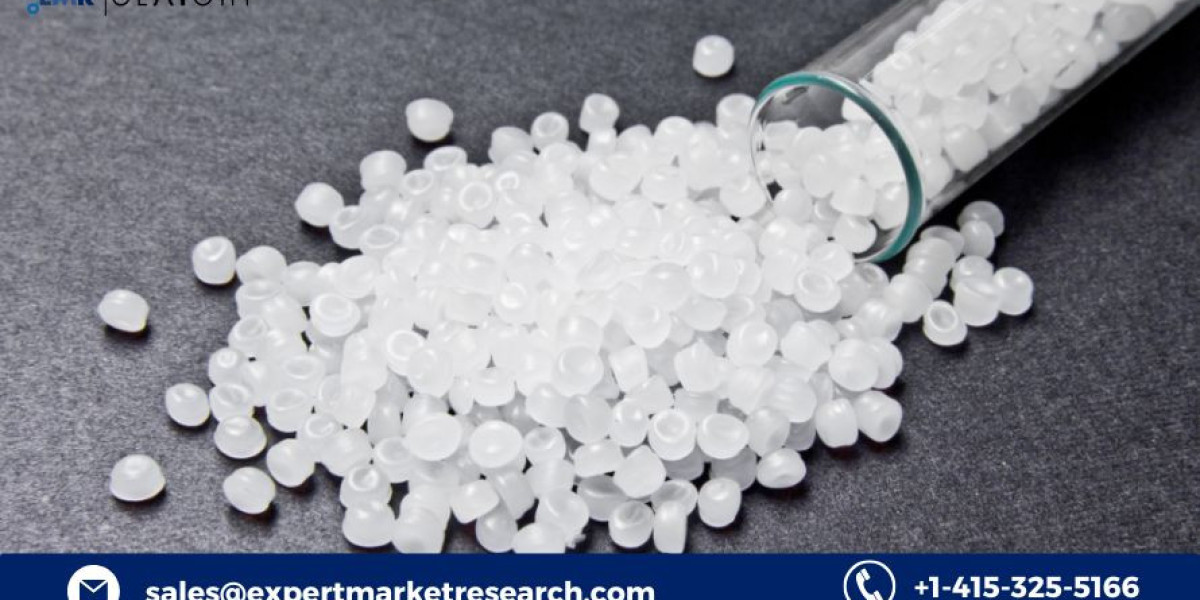Introduction
The High-Density Polyethylene (HDPE) Market Outlook highlights the ongoing growth and development within one of the world’s most widely used plastics. As a thermoplastic polymer made from petroleum, HDPE is primarily used in the production of rigid plastic containers, pipes, and various consumer products. In 2023, the global capacity of HDPE stood at approximately 68,000 KT, with projections indicating that it will reach 82,000 KT by 2032. Asia-Pacific continues to dominate the production of HDPE, holding more than 50% of the global market share. This article delves into the supply and demand dynamics of HDPE, examining key factors driving growth, industry trends, and the impact of technological advancements on market expansion.
What is High-Density Polyethylene (HDPE)?
High-Density Polyethylene (HDPE) is a versatile, durable plastic that boasts a range of beneficial properties such as high tensile strength, resistance to chemicals, low moisture absorption, and high impact resistance. These characteristics make HDPE ideal for numerous applications in various industries, including packaging, construction, automotive, and agriculture.
HDPE is produced through the polymerization of ethylene (ethylene gas derived from petroleum) under high pressure. The resulting polymer has a linear structure, as opposed to low-density polyethylene (LDPE), which has a more branched structure. This configuration of HDPE contributes to its higher density and makes it suitable for applications that require strength and rigidity.
Key Applications of HDPE
Packaging Industry
HDPE is widely used in the packaging industry due to its strength, flexibility, and resistance to chemicals. It is the material of choice for producing bottles, containers, and plastic bags. The food and beverage industry, in particular, relies heavily on HDPE for manufacturing bottles and jugs for milk, juices, and cleaning products. HDPE's non-toxic nature makes it a suitable choice for packaging consumables.Construction and Infrastructure
HDPE is extensively utilized in the construction industry for applications like piping, geomembranes, and insulation. The material’s resistance to corrosion and high durability make it ideal for use in underground and water-related infrastructure, including drainage systems, gas pipelines, and sewer systems.Agriculture and Irrigation
Due to its weather resistance, HDPE is also commonly used in agricultural applications, such as irrigation pipes, greenhouse films, and mulch films. HDPE's ability to withstand exposure to harsh chemicals and UV radiation makes it well-suited for these outdoor uses.Automotive and Industrial Applications
HDPE is gaining popularity in the automotive sector for producing fuel tanks, bumpers, and other lightweight components. Additionally, it is employed in industrial applications for manufacturing tanks, containers, and storage solutions that require resistance to harsh chemicals and extreme temperatures.
Get a Free Sample Report with Table of Contents@
Supply and Demand Dynamics of the HDPE Market
Global Supply Landscape
The production of HDPE is primarily driven by the availability of ethylene, which is produced through the refining of crude oil or natural gas. The supply of HDPE is concentrated in regions with strong petrochemical industries, particularly the Asia-Pacific region, which accounts for more than 50% of global HDPE production capacity. North America and Europe also contribute significantly to global HDPE production.
Major Producers of HDPE
Saudi Basic Industries Corporation (SABIC)
As a global leader in the petrochemical industry, SABIC is one of the top producers of HDPE, particularly in the Middle East. Its advanced production facilities and extensive distribution network support industries that rely on HDPE for a variety of applications, such as packaging and infrastructure.ExxonMobil Chemical
ExxonMobil is a key player in the global HDPE market, with manufacturing sites in North America, Asia, and Europe. The company utilizes state-of-the-art polymerization technology to produce high-quality HDPE for use in industries such as packaging, construction, and automotive.Dow Chemical
Dow Chemical is another significant producer of HDPE, offering various grades of the polymer suited for different applications. The company’s global footprint and diverse production capabilities make it a prominent supplier in the global HDPE market.Chevron Phillips Chemical
Chevron Phillips Chemical produces HDPE at several facilities worldwide, serving industries like packaging, construction, and agriculture. The company’s strong commitment to sustainability and innovation positions it as a key player in the HDPE market.
Regional Distribution of HDPE Production
Asia-Pacific
The Asia-Pacific region leads the global HDPE market, accounting for more than 50% of global production capacity. Countries like China, India, and South Korea have witnessed significant investments in petrochemical infrastructure, boosting the region's production of HDPE. China, in particular, stands as the largest consumer of HDPE globally, driven by its rapidly growing manufacturing sector and extensive packaging industry.North America
North America, especially the United States, remains a significant player in the HDPE market, benefiting from its strong petrochemical industry, particularly in the Gulf Coast region. The United States is not only a major producer of HDPE but also one of the leading consumers, particularly for packaging and industrial applications.Europe
In Europe, countries like Germany and the Netherlands are key producers of HDPE, with a focus on high-end applications like automotive parts and durable consumer products. The region’s regulatory framework and focus on sustainability also shape the demand for eco-friendly and recyclable HDPE products.
Demand Drivers for HDPE
Several factors are fueling the growth of the HDPE market, including:
Growth in the Packaging Industry
As e-commerce continues to expand and consumer demand for packaged goods rises, the demand for HDPE packaging products such as bottles and containers has grown significantly. HDPE’s durability, recyclability, and versatility make it the material of choice for packaging applications.Infrastructure and Construction Boom
The ongoing demand for sustainable and durable materials in the construction and infrastructure sectors is driving the use of HDPE in pipes, drainage systems, and geomembranes. Urbanization, infrastructure development, and the need for sustainable construction materials continue to support HDPE consumption.Sustainability and Recycling Initiatives
The increasing emphasis on sustainability and recycling has fueled demand for HDPE, particularly in the packaging sector. HDPE is highly recyclable, and the rise of circular economy initiatives is encouraging the recycling and reuse of HDPE materials.Technological Advancements in Production
Advancements in HDPE production technologies, such as improved catalysts and more efficient polymerization processes, have led to cost reductions and higher-quality HDPE. These innovations enable the production of new HDPE grades for specialized applications, further expanding its use in various industries.
Challenges in the HDPE Market
Despite the growth prospects, the HDPE market faces several challenges:
Raw Material Price Fluctuations
The price of crude oil directly influences the cost of HDPE production, as the polymer is derived from petroleum-based ethylene. Volatile oil prices can lead to fluctuations in HDPE prices, which may affect profit margins for manufacturers.Environmental Concerns
While HDPE is recyclable, the environmental impact of plastic waste remains a major concern. Efforts to improve recycling rates and reduce plastic waste are driving changes in production practices, but public scrutiny of plastic use continues to impact market dynamics.Regulatory Pressures
Increasing regulatory pressures around plastic use, particularly in the packaging industry, may push manufacturers to develop more sustainable alternatives. These regulations could affect the demand for conventional HDPE products.
Future Outlook
The High-Density Polyethylene (HDPE) Market Outlook remains optimistic, with the market expected to grow at a steady pace, reaching a projected volume of 82,000 KT by 2032. The key growth drivers include the expanding packaging, construction, and infrastructure sectors, as well as advancements in recycling and sustainability initiatives. As global demand for HDPE rises, manufacturers will need to navigate challenges such as raw material price volatility and environmental concerns while continuing to innovate to meet evolving consumer demands.








